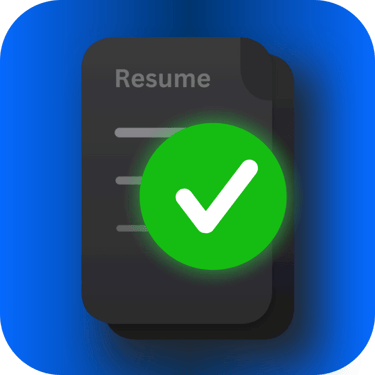Writing your resume based on your research profile
6/25/20253 min read
A detailed skills section can increase a candidate’s chances of getting an interview by 29%.
In the world of research, your Curriculum Vitae (CV) is your life's work on paper. It's a comprehensive, multi-page textbook documenting every publication, presentation, grant, and committee you've ever been a part of. It is a testament to your rigor and dedication.
But when you apply for a specific research position, a faculty opening, or a competitive grant, sending that unabridged textbook is often a mistake. Your audience—a search committee or hiring manager with a mountain of applications—is asking for the abstract. They need a concise, targeted document that proves you are the perfect fit for their specific needs, right now.
Your brilliant research can get lost if it's not presented correctly. Tailoring your academic CV or resume isn't about "dumbing it down"; it's about translating it into the precise language your audience needs to hear.
Step 1: Reframe your objective into a "research profile"
A generic objective is useless. Instead, lead with a sharp "Research Profile" or "Summary of Qualifications" that acts as the abstract for your entire career. It should immediately state your area of expertise and how it aligns with the institution or project.
Before (Generic):
"Seeking a challenging post-doctoral position where I can apply my research skills."After (Tailored for a computational biology lab):
"Ph.D. molecular biologist with 5 years of hands-on experience in computational genomics and single-cell RNA sequencing. Seeking to apply expertise in Python and machine learning to investigate cell differentiation pathways in Dr. Smith's lab."
Step 2: Curate, don't just list, your publications
This is the biggest mistake academics make. A 10-page publication list is impressive, but it forces the reader to do the work. You need to guide their attention.
Create sub-headings: Instead of one long list, group them: "Peer-Reviewed Journal Articles," "Book Chapters," "Conference Proceedings."
Use bold strategically: Bold your own name in the author list so they can quickly see your position.
Lead with the most relevant: Re-order your list for each application. If you're applying to a lab that studies Alzheimer's, your Alzheimer's-related papers should be at the very top, even if they aren't your most recent.
Step 3: Detail your research experience, not just your title
Don't just list your role as "Graduate Research Assistant." Under that title, create mini-project summaries. For each major project, briefly describe the central research question, the methods you used, and the outcome.
Example bullet point:
"Investigated the role of Protein X in neurodegeneration by utilizing CRISPR-Cas9 to create a knockout cell line, leading to a first-author publication in the Journal of Neuroscience."
Step 4: Build a toolbox of specialized skills
Create a dedicated skills section that is highly organized. This allows a scanner to quickly see if you have the technical chops they need.
Example:
Methodologies: Single-Cell RNA Sequencing, Flow Cytometry, CRISPR-Cas9, Qualitative Data Analysis (NVivo)
Technical skills: Python (Pandas, SciPy), R, MATLAB, SQL, Lab Information Management Systems (LIMS)
Grants & funding: Successfully secured a $25,000 Graduate Research Fellowship (NSF).
The academic's burden: the one-CV mindset
The hardest part of this is psychological. As a researcher, you're trained to maintain one exhaustive, chronological CV. The idea of creating multiple, shortened, and re-ordered versions for every single application feels unnatural and incredibly time-consuming. It's a massive administrative burden on top of your already demanding research work.
Your personal research assistant for applications
Think of the TailorMyResume iOS app as the smart assistant you need for this process. It helps you
break free from the one-CV mindset without manual labor.
You can house your comprehensive experience within the app. Then, when you find a specific role, our tool analyzes the position description and helps you instantly pull out the most relevant publications, re-order your experience, and highlight the exact technical skills and methodologies they're looking for. It helps you write the perfect abstract from your textbook, every time.
Stop sending the textbook. Start sending the abstract that gets you funded and hired.
Ready to translate your expertise effectively? Download TailorMyResume from the App Store and start creating applications that get noticed.


